Статьи журнала - Arctic and North
Все статьи: 955
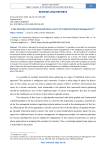
Is the Extraction of Fossil Mammoth Bone a Form of Traditional Nature Management?
Статья научная
This article is devoted to solving the question of whether it is possible to consider the extraction of mammoth bone as one of the types of traditional nature management of the indigenous peoples of the North. The solution to the problem is considered on the part of three criteria — the formation of a tradition of economic activity within an ethnic group, the focus of economic activity on use for their own needs, a balanced approach ensuring sustainable environmental management. As a result, the author concludes that the extraction of mammoth bone is a type of activity that cannot be called fully consistent with the criteria for traditional nature management. At the same time, in the article, the author proposes to consider broader the concept of traditional nature management in the modern capitalist world, supplementing it with a view from the world-system analysis of the dichotomy of traditional and capitalist society.
Бесплатно
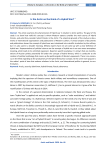
Is the arctic on the brink of a hybrid war?
Статья научная
The article examines the phenomenon of hybrid war in relation to Arctic politics. The goal of the study is to show how valid this concept is, who Western experts consider the main source of hybrid threats, and what they consider hybrid threats in the Arctic. The empirical grounds of the study are documents of international organizations and publications of Western authors. A critical analysis of documents and publications shows the concept of hybrid war was introduced into scientific circulation by the military, but it is also used in a broader meaning. Military experts have not yet come up with a clear definition of hybrid war. Representatives of political science use the concept of hybrid war in an even more amorphous meaning, which leads to its unlimited expansion. Based on specific examples, it is shown that any manifestations of Russian politics potentially fall under the concept of hybrid threats, which is conducive to the creation of political mythology that covers up the political goals of Western opponents. There is no consensus in Western publications regarding the productivity of the concepts of hybrid threats and hybrid wars, but a more common radical point of view, which limits down to the imposition of confrontational relations in the Arctic and in international politics in general.
Бесплатно

Статья научная
Since the collapse of the Soviet Union, local communities have been adapting to new political and socioeconomic realities. These changes have prompted dramatic outmigration among rural populations, es-pecially in the Russian Arctic. Despite these changes, some communities remain viable, with some residents exploring new economic opportunities. This study uses findings from qualitative interviews to understand what factors shape community viability, interviewing residents and relevant regional stakeholders in two case areas in the Arkhangelsk oblast: the Solovetsky Archipelago in the White Sea and islands in the delta of the Northern Dvina River. The results indicate that community viability and the reluctance of community mem-bers to leave their traditional settlements are shaped by livelihoods, employment opportunities, and social capital. Social capital is characterized by such empirically identified factors as shared perceptions of change and a willingness to address changes, place attachment, and local values. We conclude that further develop-ment or enhancement of community viability and support for local livelihoods also depends on 1) bottom-up initiatives of engaged individuals and their access to economic support and 2) top-down investments that contribute to local value creation and employment opportunities.
Бесплатно
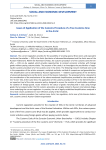
Issues of Application of the Customs Procedure of a Free Customs Zone in the Arctic
Статья научная
The current regulation provides for the possibility of creating special (free) zones and equivalent territories (hereinafter — SEZ) in the Arctic (territories of advanced development and the Arctic zone of the Russian Federation). Within the framework of SEZs, the customs procedure of a free customs zone (hereinafter — FCZ) can be applied, which provides opportunities to conduct economic activities with foreign goods without paying customs duties. The purpose of the study is to investigate the peculiarities of applying the customs procedure of a free customs zone in the Arctic. The following research methods were used in the preparation of the article: economic, analytical methods, method of comparison and generalization. This simplification can be demanded by Russian organizations — residents (participants) of the territories of advanced development and the Arctic zone of the Russian Federation. The proposed article is devoted to the consideration of the mechanisms of the above-mentioned simplifications provided for the residents of the “Arctic” SEZ. At the same time, the application of the customs procedure of FCZ in the SEZ territories is an important tool of the state economic policy, designed to ensure the creation of comfortable conditions for taxation of foreign goods. Issues related to the status of goods manufactured in SEZs using foreign goods that are placed under the FCZ customs procedure are largely related to Russia’s international obligations underlying the current regulation. In practice, the set of legally established simplifications analyzed in the article creates conditions for more effective activity of SEZ residents.
Бесплатно
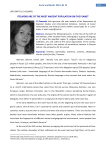
Itelmeni - are of the most ancient population on the planet
Статья научная
Analyzed the following factors: 1) the time of the birth of the Itelmens, their ancestral home, belonging to a group of languages, 2) check the specified region 3) religious beliefs, customs and traditions, arts and crafts 4) the social organization of the society. Attention is paid to the process of assimilation itelmens in Russian culture, the perspectivs for its survival.
Бесплатно

Joe Biden and Donald Trump’s Rhetoric on the Arctic
Статья научная
This paper examines the evolution of US Arctic policy by comparing the approaches of the Trump and Biden administrations. An analysis of The New York Times shows that Trump shifted the focus from the traditional balance of interests to economic development, especially oil and gas production in Alaska, including drilling in the Arctic Wildlife Refuge. His administration justified this by economic benefits and the need to compete with Russia, planning infrastructure development, including the construction of icebreakers. The media image of Trump’s policy reflected a pragmatic and unilateral approach, putting economic interests above environmental issues and international cooperation. Despite participating in the Arctic Council, Trump preferred bilateral negotiations, while proposals such as the purchase of Greenland undermined international trust. Militarization of the region to contain Russia and China was presented as a necessary measure. Biden, despite his declared commitment to international cooperation and the environmental agenda, continued Trump’s confrontational course towards Russia and China, expressing concern about their activities in the region and using hostile rhetoric. Although the 2021 summit with Putin demonstrated a willingness to engage in dialogue on security and climate issues, mistrust persisted and was exacerbated by subsequent geopolitical events.
Бесплатно
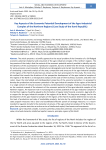
Статья научная
The article presents a scientific approach to the actual problem of the formation of a full-fledged economic potential (industrial and consumer) of the agro-industrial complex of the northern regions. The key premise of the study is that the content of the economic potential makes it possible to identify not only the dynamics of the accumulation of production capacities, but also to determine the trends and prospects for socio-economic, environmental, infrastructural, demographic and market transformations. The principle of conducting a systematic analysis of the state, composition and structure of the agro-industrial complex of the regions of the North of potential was chosen as the main prerequisite for the study. The most reliable method that reveals the directions of the prospective development of the agro-industrial complex of the regions of the North is a retrospective analysis of the state of their technical, economic and other indicators. Given the interrelated and interdependent properties of the economic potential, it is proposed to develop the production and consumer potentials of the agro-industrial complex of the regions of the North in a single context of relevant economic relations and development strategies. Emphasis should be placed on the constant renewal of the elements of the economic potential of the agro-industrial complex of the Northern regions. An important role in increasing the economic potential of the agro-industrial complex of the Northern regions should be played by the formation of regular state financial, economic, legal and other support for the agro-industrial complex of the regions of the North. The long-term strategic line for the development of the agro-industrial complex of the regions of the North should be determined not only by the level of production and sales of marketable products, but also by the combination of state and non-state program measures into a clear and coordinated effective system of strategic measures. It is recommended to regularly transform the elemental structures of the agro-industrial complex of the Northern regions from a passive state into an active carrier of intellectual capital, fixed assets and investments.
Бесплатно
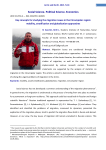
Статья научная
Migration issues are considered through the stratification and globalization approaches. Emphasizing the importance of the classic theories, the author reviews the key studies of migration, as well as the empirical projects implemented by various research centers. Theoretical statements are supported by the analysis of statistics on migration in the Circumpolar region. The article is aimed to demonstrate the heuristic possibilities of solving the urgent problems of migration in the Arctic.
Бесплатно

Key trends of investment development in the Arctic zone of the Russian Federation in 2008–2017
Статья научная
This article is devoted to the study of the investments and their transformation in the Arctic zone of the Russian Federation in the conditions of the crisis of the last decade. Current studies indicate the occurred as a result of economic shocks aimed at the implementation of the state Arctic policy, as well as the need for financial and technological constraints that require a retrospective analysis of investment activity in the Arctic zone. The study of investments in the Arctic zone of the Russian Federation in 2008-2017 has four stages identified: 2008–2010; 2011–2012; 2013–2014; 2015–2017. One may see that investments in the Russian Federation are due to quite sharp fluctuations and their uneven distribution across regions. The most significant volumes of Russian investments in the first phase were typical for regions partially located in the Arctic zone of the Russian Federation, and now — for entirely Arctic areas. The same situation was until 2014 with foreign investments in the Arctic. However, after the start of the “sanctions war,” we observed a turning point. Foreign investments in the Arctic areas of the Russian Federation significantly decreased. The decline continues to this day. Predicted options for further investment development in the Arctic zone of the Russian Federation have an adverse scenario for the national economy.
Бесплатно
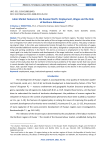
Labor Market Features in the Russian North: Employment, Wages and the Role of Northern Allowances
Статья научная
This article focuses on the labor market in the Russian northern regions. The labor market in the Russian North was formed due to the state policy of the no longer existing state, aimed at the active attraction of migrants from other territories for the industrial development of the country. This policy of attracting migrant labor in the state was implemented mainly through the creation of the institution of wages, which provided additional northern payments to the salary, designed to compensate for the discomfort of living and working conditions in the North. This led to an increase in employment in the North. The research goal is to study the formation and development of the wage institution, as well as to determine the impact of wages on employment in modern conditions. The article presents the history of formation of the institution of wages in the Russian North. The dynamics of labour market indicators is given, the change in the ratio of wages in the North is presented, based on official statistical data over the past 15 years. The results of the study show that the northern territories have problems of the labor market that have arisen in recent decades: high levels of unemployment, reduced employment, and wages, once being a significant factor, had a positive impact on employment, but today contribute to the decline in the economic attractiveness of life in the North.
Бесплатно
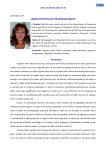
Labor Potential of the Russian Arctic
Статья научная
Demographic and migratory processes are analyzed, as well as the effect of low life level on the development of labor potential of the regions of the Russian Arctic
Бесплатно
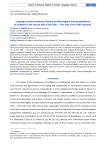
Статья научная
Svalbard, despite its remoteness from the mainland and traditional routes of communication, is an Arctic territory that has been attracting the attention of various countries and peoples for several centuries. In the 18th - first half of the 19th century, the archipelago was actively developed by Pomors, engaged in mammal hunting there. In the 19th century, Norwegians revealed their economic interest in Svalbard. Historical studies have repeatedly examined the cases of contacts between Pomors and Norwegians during mammal hunting expeditions to Svalbard, but none of the authors have studied the language contacts between Pomors and Norwegians during the development of Svalbard. The authors used an interdisciplinary approach and analyzed documentary and literary sources to formulate a hypothesis about the practice of Pomor-Norwegian contacts, incl. those in Russenorsk. The study presents a new issue for scientific discussions by both historians and linguists, which can serve as a basis for the development of international cooperation between Norway and Russia.
Бесплатно
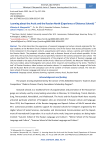
Learning about the Arctic and the Russian North (Experience of Distance Schools)
Статья научная
The article describes the experience of seasonal language and culture schools organized for foreign students at the Northern (Arctic) Federal University. One of the factors that attract participants is the Arctic component in the program content, acquaintance with nature, culture, customs and modern life of the Russian North. The pandemic situation made only a distance format of such schools possible. At the same time, the task of preserving the cultural specificity realized in the activity component was solved. The authors described the main content components of the program of the School of Russian Language and Culture related to the topic of the North and the Arctic: video tours of Solovki, the Museum “Malye Korely”, city tours (videos about Arkhangelsk), texts about Arctic research and travelling to the Arctic, “Northern text” of Russian literature, video lectures and master classes. It is emphasized that the images of the Arctic and the Russian North are the conceptual core of the content of remote seasonal schools. The next distance school of Russian Language and Culture is announced.
Бесплатно
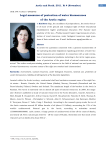
Legal measures of protection of water bioresources of the Arctic region
Статья научная
In article the questions connected with a general characteristic of the operating faunistic legislation regarding protection of water biological resources are considered. In connection with a wide circulation of environmental problems including in the Arctic region questions of protection of the given kind of natural resources are very actual. The author analyses existing system of sources in the field of rational use and protection of water bioresources, concrete norms of the right are resulted and characterized.
Бесплатно

Legal regulation of the traditional (native) Pacific walrus harvest in Russia
Статья научная
The article briefly reviewed studies of the Pacific walrus. This information is necessary for the development of the Total Allowable Catch (TAC) since the native people of Chukotka annually harvest this subspecies of walrus. We have drawn attention to the long-term change in the habitat of the walrus, i.e., to the reduction of the ice period in the Bering and Chukchi Seas and possible consequences for the walrus (increased mortality and epizootics). Legal acts for the fisheries are regulating the traditional (native) walrus harvest on Chukotka, and the capture of walrus calves for educational and cultural purposes have been described. A scheme for the development of the TAC for walrus has been discussed as well. We have presented the latest data on allocated quotas and actual walrus harvest. The need for more detailed and versatile research of walrus in connection with climate change is discussed. The author suggests cooperation between the native people of Chukotka and various research institutions for the better-organized study of the walrus in relation to climate change, for conservation and rational use.
Бесплатно
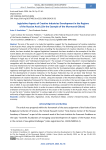
Статья научная
The aim of the work is to study the legislative support for the development of creative industries in the Russian Arctic using the example of the Murmansk Oblast. The following tasks have been solved: the legislative framework of the federal level, providing the development of creative industries in Russia as a whole, has been studied; the regional legislative framework has been studied on the example of the Murmansk Oblast; the measures of support for the development of Arctic creative industries at different levels of government have been analyzed. It was revealed that until 2021 the creative sector of the economy was reflected in legal acts of all levels through the concepts of “small and medium-sized businesses”, “self-employed citizens” and “individual entrepreneurs”. The concept of “creative industries” received legislative recognition with the adoption at the federal level of the “Concept for the development of creative industries and mechanisms for the implementation of their state support in large and major urban agglomerations until 2030” in 2021. The Concept and the Action Plan for its implementation, adopted in 2030, laid the regulatory and legal basis for the development of this sector of the economy, but the legislative framework for the development of creative industries in the Russian Federation has not yet been fully formed. The study showed that in the Arctic zone of the Russian Federation the situation with regulatory support for the development of creative industries is similar. Using the example of the Murmansk Oblast, it was revealed that the regional legislative framework for this promising area is currently in the nascent stage, and the first normative-legal acts directly related to the development of the Arctic creative industries began to appear only in 2023. It was concluded that it is necessary to develop a concept for the development of Arctic creative industries in the Russian Arctic in order to ensure uniform approaches, consistency of actions and coordination of measures for the development of this sector of the economy in the Russian Arctic. The need to use the term “creative industries” in various legal acts in order to avoid discrepancies and to ensure the uniformity of legal support for this sector of the economy is substantiated.
Бесплатно
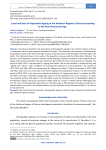
Статья научная
The article is devoted to the peculiarities of demographic ageing in the northern regions of Russia in accordance with the new economic threshold of old age. The relevance of the research is conditioned by the gradual increase of the retirement age in Russia and preservation of the favorable retirement age in the North. The information base is the results of the population censuses and the official data of Rosstat. The dynamic and comparative statistical analysis and demographic research methods are used. Regularities of ageing of the Russian population by new retirement age in different inter-census periods are revealed. The period of 1959-1970 is characterized by “ageing from below” due to the transition to limited fertility, and “ageing from above” under conditions of increasing life expectancy of the population. The periods of 1970-1979 and 1989-2002 are characterized by “ageing from below”. Within the periods of 1979-1989 and 2002-2010, there was a decrease in the level of ageing of the population in Russia. The last intercensal period of 2010-2021 is the only one for which the definition of “ageing from above” is suitable. By 1989, the North zone had a noticeably younger age structure of the population than in the country as a whole. The migration outflow that began in the late 1980s caused the increased rates of demographic ageing of the Northern regions, which also continued in 2002-2010. As a result, in Karelia and the Arkhangelsk Oblast, the share of the population above the new retirement age in 2021 already noticeably exceeds the average Russian level, while in the Sakhalin Oblast, the Komi Republic and the Murmansk Oblast, it is close to the national level.
Бесплатно
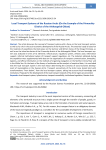
Статья научная
The article discusses the concept of transport system with a focus on the local transport system, as well as its role in the socio-economic development of the Russian Arctic. The empirical study is based on the materials of expeditions that took place on the Summer and Winter shores of the Onega Peninsula, as well as on the island territories of the Primorskiy district of the Arkhangelsk Oblast. The local transport system was analyzed in terms of its elements: infrastructure, regulatory system, vehicles used, information support, informal institutional system of transport support regulation, etc. The materials obtained during the expedition were supplemented with data on the organization of transport communication, timetables, logistics, and official information on the methods of organizing navigation on the Northern Dvina River and in the White Sea. On the basis of the theory of multiscale and the analysis of empirical data, it is concluded that the local transport system is the main factor determining the scenarios of socio-economic development of municipalities in the Russian Arctic. Transport connectivity of the Arctic zone should start with transformations “from below”, from the local transport system, taking into account local knowledge and institutions. Proposals for the development of the local transport network of the Arctic region are presented.
Бесплатно
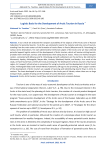
Logistic Basis for the Development of Arctic Tourism in Russia
Статья научная
In our article we analyzed the transport accessibility of the subjects of the Arctic zone of Russian Federation for potential tourists. To do this, we estimated in points the material and time costs of tourists, traveling from the main centers of the formation of tourist flows in Russia (Moscow and St. Petersburg) to various Arctic destinations. For each administrative-territorial subject of the Arctic zone we have selected potential support logistic centers of the development of Arctic tourism, which will receive visiting tourists, provides them with basic services and redistributes them along tourist routes. These are mainly transport centers, connected with Moscow and St. Petersburg and with settlements on this territory. We referred to Murmansk, Apatity, Arkhangelsk, Naryan-Mar, Vorkuta, Salekhard, Norilsk, and Anadyr. As a result of the study, we have found that currently the most promising for the development of Arctic tourism is Murmansk region, its transport infrastructure is convenient for using by tourists and the development of Arctic tourist routes. Arkhangelsk Oblast and Yamalo-Nenets Autonomus Okrug are also promising, their support centers of the development of Arctic tourism are capable of receiving and redistributing tourist flows in Arctic directions. The least developed in terms of transport is the Arctic part of Yakutia, where there are no large transport hubs, capable of taking on the function of tourist distribution centers.
Бесплатно
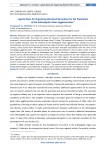
Статья научная
Weekend rest is an important part of a person's recreational cycle. Northerners need a good rest to maintain their health. The choice of a place for vacation is associated with restrictions on the time of movement, since its period should not be longer than 2–3 days. The purpose of the research is to select the most suitable transport areas for residents of the Arkhangelsk urban agglomeration, taking into account the landscape and tourist resources. Based on the study of vehicles and the geographical location of tourist services, three sectors were identified, limited by five–hour transport accessibility from the cities of the Arkhangelsk agglomeration. The most promising for priority development is the southern sector, the centers of which can be the villages of Kholmogory and Emetsk. Excursion, relaxation, ecological and sports tourism can be offered there at any time of the year. The transit position of the main roads of the region gives this sector the advantages of attracting tourists from other regions. The western and eastern sectors have significant recreational potential, but their use is constrained by poor transport accessibility. The western sector with the center in the city of Onega is promising for the development of seaside relaxation tourism in summer and sports tourism in winter. The eastern sector with two centers in the villages of Pinega and Karpogory is promising for ecological, sports and excursion tourism throughout the year.
Бесплатно

